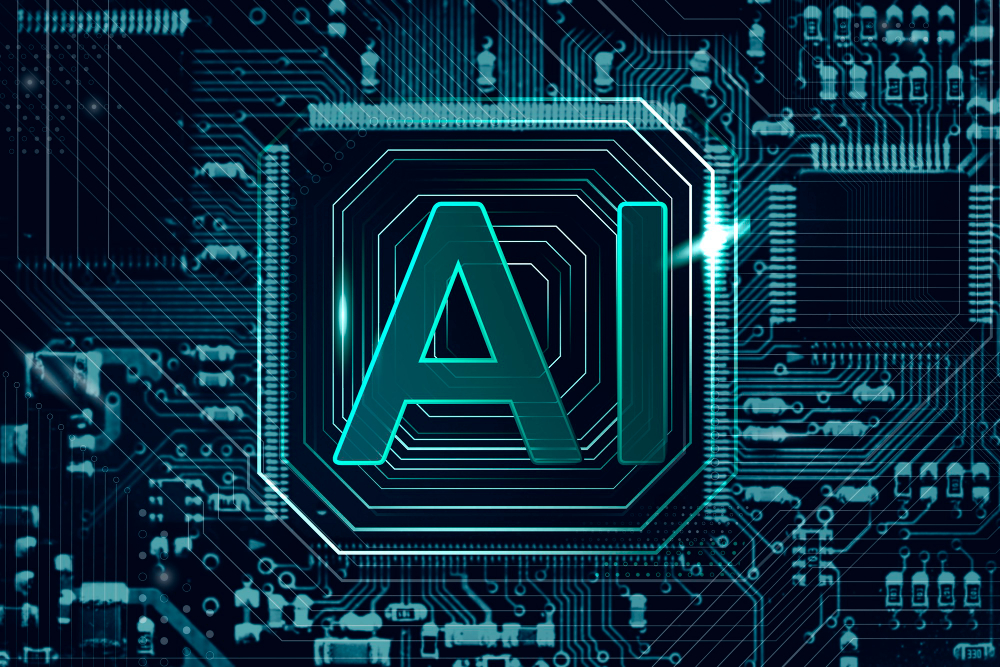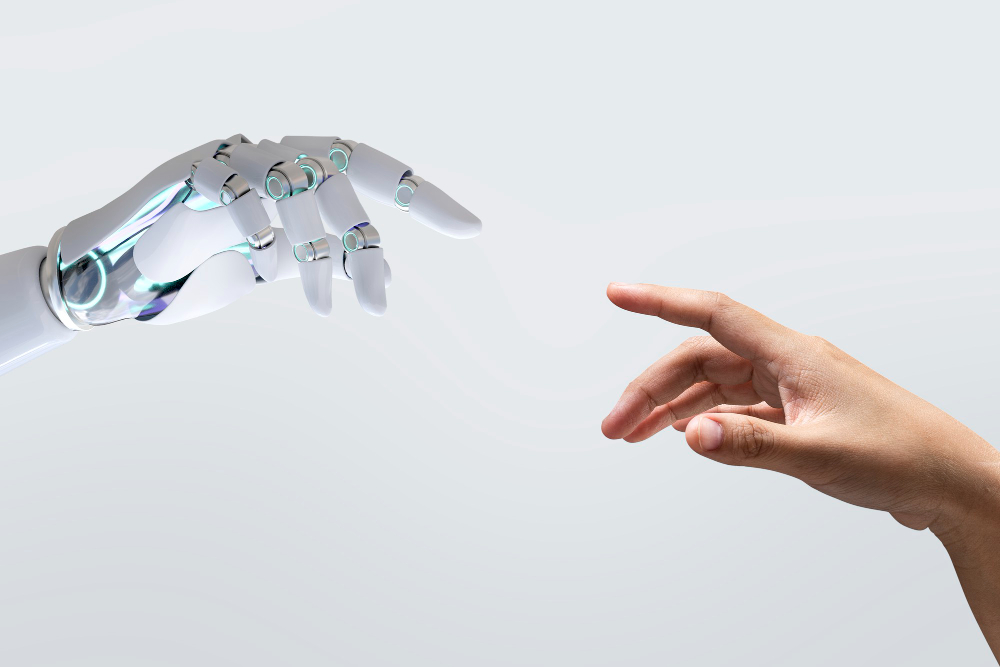Edge AI
Introduction
Edge AI literally means direct deployment of AI models and algorithms at the edge. Edge smart devices could range from simple sensors, microcontrollers to intelligent devices, in place of relying on huge cloud-based data centers instead.
This means that data processing and making decisions come as close as possible to where data is being generated. It allows for real-time insights near future, and actions.
Unlike a cloud computing-based central AI, Edge AI divides intelligence across the network edge and doesn't strictly require constant internet connectivity and data transmission to a one central location, cloud computing facility or remote edge server somewhere.

Importance and Relevance
The need for Edge AI is growing, as more industries realize the possibility through which it can improve the efficiency of operations and offer real-time solutions. Its technology involves processing data in the local environment, without relying too much on cloud-based servers. This decentralization of edge artificial intelligence, is of the utmost importance in those sectors where low latency, data privacies, and reliability take priority.
Applications of Edge AI are wide and varied as it reaches into most areas of endeavor, such as medical care, manufacturing, retail, transportation, farming, and intelligent cities-a reflection of its versatility and impact.
Why Deploy AI at the Edge? What Are the Benefits of Edge AI?
As artificial intelligence can learn languages, sounds, scents, temperature, among other analog forms of unstructured information, it can make a difference in the lives of most users.
This is because high performance computing capabilities are likely to make AI Applications not be deployed at central or corporate data centers. Benefits of edge computing and AI are:
Core Concepts of Edge AI technology work

Architecture of Edge AI
Architecture of Edge AI consists of several key components such as devices, edge servers, their interaction with the cloud servers.
Edge Devices: Those are sources of data that generate on the devices-they are equipped with sensors and AI that the data scientists helps them to work with local data analysis and processing; it can be smartphones, IoT connected devices, or cameras.
Edge servers: These are an intermediary type that provide additional computational power and storage capacity. They collect data from different devices and further process complex ones if needed.
Cloud Servers: While Edge AI minimizes the use of cloud computing, the latter is still utilized for model training and massive-scale data analytics as well as long-term data storage.
This system will offer a seamless information exchange between edge device the interconnected devices and cloud dispersed, with running ai computing framework facility that ensures such edge AI models run efficiently in all the dispersed distributed computing framework frameworks.
Key Technologies
Several technologies empower Edge AI, including the following:
Microcontrollers, AI Accelerators: Both are optimized for low-power, high-performance processing and serve well in edge environments.
GPUs, TPUs: These modules would provide sufficient power to run complex AI algorithms and deep learning models in the edges.
AI Frameworks: TensorFlow Lite, for example, has rendered easy the execution of AI models on edge devices through deploying models optimized based on performance and resource constraints. In like terms, there is also an OpenVINO.
Data Processing and Inference

In Edge AI, data is processed and inferences are made directly on the edge devices. There, this will mean collection of sensor data, running of AI algorithms and generation of insights all without reliance on some kind of centralized, cloud based platforms or a centralized remote server anywhere. This allows real-time data processing with less latency on deciding and also better decision-making.
Deployment and Management
It will require a strategic approach toward deploying and managing Edge AI solutions to enable smooth running and easy maintenance. Key considerations include model optimization: the AI models need to be lightweight and as efficient as possible to run on the limited computational resources of the devices. Data management: handling data collection, processing, and storage at the edge would require proper application of robust practices of data management in an effort to ensure data integrity and security.
Scalability: Hundreds of distributed the devices need to be handled with scalable solutions that regard device management, updates, as well as upgrades.
Applications of Edge AI models
Healthcare
In the healthcare sector, Edge AI supports real-time monitoring of patients' conditions, medical image processing, and telemedicine services. For example, wearable devices having AI can monitor people's vital signs continuously, letting medical personnel know when there is an abnormality in the signs while improving patient care and safety.
Manufacturing
Edge AI allows for predictive maintenance, quality control, and automation in smart factories. Real-time analysis of sensor data identifies potential early failures in the equipment, therefore minimizing downtime and maximizing production processes.
Retail
At the edge, Edge AI enhances customer analytics, inventory management, and super-personalized shopping experiences. Smart cameras with AI can analyze customer behaviors, optimize store layouts, and recommend to great improvement in customer satisfaction and operational efficiency in transportation.
It's changing transportation through applications for autonomous vehicles, traffic management, and logistics optimization. Self-driving cars use Edge AI in processing data and making real-time decisions for driving, which has improved the safety and efficiency of roads.
Agriculture

Edge AI can efficiently support precision farming, crop monitoring, and livestock management. Sensors and AI-enabled drones collect data on soil conditions, crop health, and livestock behavior, giving the farmer a chance to base decisions on the information gathered and enhance the use of resources available.
Smart Cities
Edge AI is helping in smart city initiatives as it enhances infrastructure management, public safety, and environmental monitoring. With the digitalization of intelligent cities, ai at the edge AI sensor/camera yields real-time data related to traffic flow, air quality, and energy consumption, whereby the city planners make appropriate decisions to enhance the quality of living in an urban landscape.
Benefits of Edge AI
Minimum Latency
Edge AI facilitates instant processing edge ai processes data along with real-time decision-making. The latency is reduced, hence it enables prompt responses to emergent conditions.
Minimum Bandwidth
By processing and storing data locally, Edge AI reduces the amount of data to be transmitted to the cloud, thus conserving bandwidth and minimizing dependence on network connections between cloud data centers. .
Improved Privacy and Security cameras
Processing data at the network edge also reduces the risk that accrues with transmitting data to other physical locations in a centralized cloud server, thus enhancing privacy and security especially for sensitive data.
Reliability
Edge AI operates in environments with limited to no network bandwidth or intermittent, internet connection access, providing reliable performance.
Challenges and Limitations
Resource Constraints
Edge devices are typically computationally weak and have limited storage; therefore, AI models designed for them need to be lightweight.
Model Optimization
The optimization of AI models involves minimizing resource needs while maintaining the best possible performance, especially since the development of efficient models is very complex and demands specific techniques and tools.
Data Management
Handling Data Collection, Processing, and Storage at the Edge computing environment
Scalability poses challenges concerning data integrity, security, and scalability.
Scalability
Deployment and Management Scalable solutions must be able to cope with and update thousands of distributed edge devices, including the management of the edge device management, devices, monitoring, and maintenance.
Future Trends and Directions

Hardware Advancements
More powerful and energy-efficient edge devices will propel the development of Edge AI. Such edge devices will open more complicated and sophisticated applications.
Improved Connectivity
The rollout of 5G and other advanced connectivity technologies will give Edge AI capabilities a boost, by allowing for high-performance computing, faster and more reliable information transmission, and improved network performance.
New algorithms and techniques especially designed to be deployed at the edge will further enhance the performance and efficiency of AI models, thus making way for the offering of highly robust and adaptable solutions.
IoT Integration

An integrated Edge AI and Internet of Things (IoT) will have even more comprehensive solutions that leverage the synergy between AI and connected devices in the process to improve data collection and analysis better.
Edge AI Platforms and Ecosystems
More significant growth will be seen in platforms and ecosystems that support Edge AI development and deployment, facilitating widespread adoption and integration of edge technology into various industries.
Case Studies
Some notable implementations in using Edge AI.
Healthcare: A hospital adopted Edge AI-enabled wearable devices to remotely monitor the vital signs of patients in real time. This ensured improved patient care and a chance to send them home early.
Manufacturing: Using Edge AI for predictive maintenance, a smart factory reduced its equipment downtime by 30%. In addition, its production efficiency also went up.
Retail: A retail store utilized Edge AI for customer analytics and recorded an increase of 20% sales because of personal suggestions and suitable layouts.
Lessons Learnt
Case Studies The following case studies introduce the selection of proper hardware and edge device, an optimized training process for AI models concerning the deployment on the edge device, and robust data management to have successful Edge AI implementations.
Edge AI Development
Choosing the Right Edge AI Hardware
When it comes to Edge AI applications, choosing the right hardware for the job is all about weighing factors such as computational power, energy efficiency, or compatibility with AI frameworks, among others.
Frameworks and Tools
The most common used frameworks and tools to develop Edge AI are TensorFlow Lite, OpenVINO, and Edge Impulse-ai applications, ai solution which provide developers with all the data and resources needed to start deploying AI models on edge devices.
Best Practices
Good practices in developing, deploying, and maintaining Edge AI solutions include:
Model Optimization: Assuring AI models are lightweight and efficient for edges deployment.
Data Management: Applying robust practices related to collecting, processing, and storing data.
Scalability: Developing scalable solutions for the management of distributed edge devices.
Security: Ensuring data privacy and security through local processing and encryption.
Ethical Considerations
The scope of ethical considerations in Edge AI ranges from responsible use of AI technologies, data privacy, and the introduction of biases in the models themselves.

Conclusion
Edge AI is revolutionizing industries. It enables the processing and making decisions both in cloud data centers and at the edge in real-time reducing latency, enhancing privacy and reliability. Among its numerous applications lie healthcare, manufacturing, retail, transportation, agriculture, and smart cities, which further outline its flexibility and wide impact.
Frequently Asked Questions (FAQs)
1. What is Edge AI?
Edge AI is a machine learning algorithm run locally on a hardware device running ai,, not in cloud ai, centralized cloud environment.
Edge" refers to AI at the edge, or the location where data is being generated-for example, on your smartphone, sensor, or IoT device-and AI workloads such as inference or data processing happening directly on those devices. Edge AI will reduce the amount of the data generated and that needs to be sent to the cloud, thus leading to faster responses and more enhanced privacy.
2. Is Edge AI the Next Big Thing?
Yes. And it is not just talk, actually; many consider edge AI would be the next future frontier in AI. With this boost of IoT, 5G, as well as a continuously growing demand for real-time and low-latency applications, edge AI offers real advantages: the speeds are faster, bandwidth usage is lower, and so does data security.
It has prime applications in autonomous vehicles, smart cities, healthcare, and industrial IoT.
3. What Are the Advantages of Edge AI?
It reduced latency. All processing had to be done locally and cut down on the time it took to make decisions without having to forward their packages to the cloud.
It improved privacy since sensitive data had to be kept on devices which limits the potential breach by reducing transmission.
Reduced bandwidth because they used limited internet bandwidth and de-emphasized cloud computing; they didn't have to upload most of their data as frequently to save bandwidth.
It also cuts costs when the requirement for cloud data storage and processing is either eliminated or reduced.
It also assures smooth, uninterrupted service because it does not rely on an internet connection; it can function in completely offline environments.
4. What is Apple Edge AI?
Apple's edge AI is the integration of AI and machine learning algorithms right into their devices, iPhones, iPads, and Apple Watches. The Apple Neural Engine which runs in its A-series and M-series chips is designed to execute on-device machine learning.
That is to say it includes things such as Face ID, on-device speech recognition, and photo/video processing that provides privacy from security cameras and speed since it doesn't require cloud-based AI processing.
5. What Is Edge and How Does It Work?
Literally, "edge" is a term describing edge computing, where data processing and analytics occur near where the data originates (on the "edge" of the network, so to speak) as opposed to a distant, centralized cloud computing facility or an offsite data center. Edge AI simply places the models of machine learning on the smartphones, cameras, and sensors, to enumerate just a few examples.
These models process data in real time, enabling fast decisions that result in low latency and preserve privacy. Edge devices and smart machines may either be embedded with AI-specific hardware like GPUs or TPUs or rely on optimized software for local computation.
All stakeholders are encouraged to find and adopt Edge AI technologies in order to enhance operational efficiency while allowing for innovation across a variety of emerging technologies.